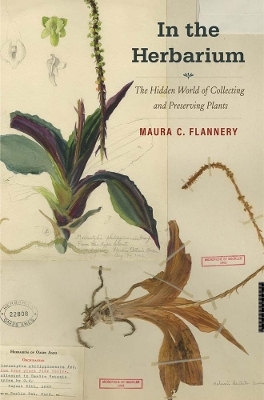
In the Herbarium
The Hidden World of Collecting and Preserving Plants
Seiten
2023
Yale University Press (Verlag)
978-0-300-24791-6 (ISBN)
Yale University Press (Verlag)
978-0-300-24791-6 (ISBN)
How herbaria illuminate the past and future of plant science
“We should treasure herbaria, in biologist Maura Flannery’s spirited retelling, not simply because of the stories they tell about plants, but because of the stories they tell about the individuals who assembled them.”—Laurence A. Marschall, Natural History
Collections of preserved plant specimens, known as herbaria, have existed for nearly five centuries. These pressed and labeled plants have been essential resources for scientists, allowing them to describe and differentiate species and to document and research plant changes and biodiversity over time—including changes related to climate.
Maura C. Flannery tells the history of herbaria, from the earliest collections belonging to such advocates of the technique as sixteenth-century botanist Luca Ghini, to the collections of poets, politicians, and painters, and to the digitization of these precious specimens today. She charts the growth of herbaria during the Age of Exploration, the development of classification systems to organize the collections, and herbaria’s indispensable role in the tracking of climate change and molecular evolution. Herbaria also have historical, aesthetic, cultural, and ethnobotanical value—these preserved plants can be linked to the Indigenous peoples who used them, the collectors who sought them out, and the scientists who studied them.
This book testifies to the central role of herbaria in the history of plant study and to their continued value, not only to biologists but to entirely new users as well: gardeners, artists, students, and citizen-scientists.
“We should treasure herbaria, in biologist Maura Flannery’s spirited retelling, not simply because of the stories they tell about plants, but because of the stories they tell about the individuals who assembled them.”—Laurence A. Marschall, Natural History
Collections of preserved plant specimens, known as herbaria, have existed for nearly five centuries. These pressed and labeled plants have been essential resources for scientists, allowing them to describe and differentiate species and to document and research plant changes and biodiversity over time—including changes related to climate.
Maura C. Flannery tells the history of herbaria, from the earliest collections belonging to such advocates of the technique as sixteenth-century botanist Luca Ghini, to the collections of poets, politicians, and painters, and to the digitization of these precious specimens today. She charts the growth of herbaria during the Age of Exploration, the development of classification systems to organize the collections, and herbaria’s indispensable role in the tracking of climate change and molecular evolution. Herbaria also have historical, aesthetic, cultural, and ethnobotanical value—these preserved plants can be linked to the Indigenous peoples who used them, the collectors who sought them out, and the scientists who studied them.
This book testifies to the central role of herbaria in the history of plant study and to their continued value, not only to biologists but to entirely new users as well: gardeners, artists, students, and citizen-scientists.
Maura C. Flannery is professor emerita of biology at St. John’s University, New York, and research affiliate in the A. C. Moore Herbarium at the University of South Carolina. She is the author of two previous books and a blog, herbariumworld.wordpress.com. She lives in Aiken, SC.
| Erscheinungsdatum | 25.05.2023 |
|---|---|
| Zusatzinfo | 42 b-w illus. |
| Sprache | englisch |
| Maße | 156 x 235 mm |
| Themenwelt | Geisteswissenschaften ► Geschichte |
| Naturwissenschaften ► Biologie ► Botanik | |
| ISBN-10 | 0-300-24791-5 / 0300247915 |
| ISBN-13 | 978-0-300-24791-6 / 9780300247916 |
| Zustand | Neuware |
| Informationen gemäß Produktsicherheitsverordnung (GPSR) | |
| Haben Sie eine Frage zum Produkt? |
Mehr entdecken
aus dem Bereich
aus dem Bereich
Diversität, Morphologie, Ökologie und Evolution der Pilze
Buch | Softcover (2023)
Springer (Verlag)
49,99 €
Gefäßpflanzen: Grundband
Buch | Hardcover (2021)
Springer Spektrum (Verlag)
44,99 €


